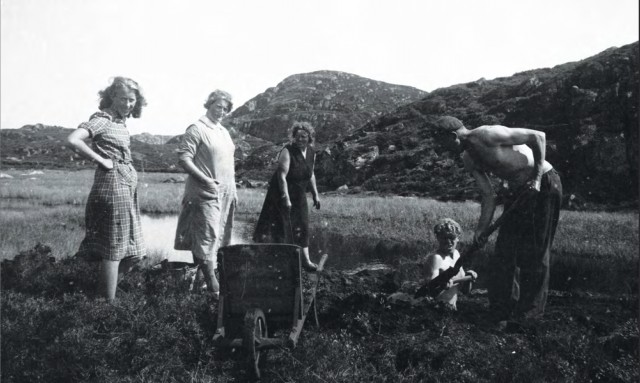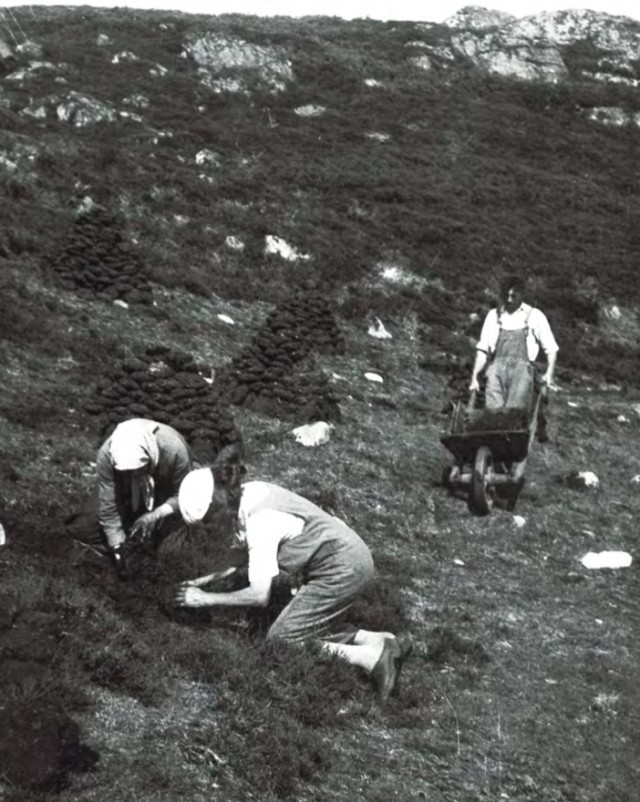"If you’ve got a goat and a bog, there is no need to go hungry"
This old saying tells a story of hard labour and toil. In deforested areas the peat bog was a vital source of fuel. Peat was also used as fertilizer as bedding for animals and as a building material.
 Peat cutting atMebergsmyra 1942
Peat cutting atMebergsmyra 1942
Peat cutting and the use of peat for fuel is an old tradition. 2000 years ago Large parts of Europe consisted of bog lands and peat grounds. The need for fuel was great, and peat was used as such.
The landowners at Lista had their peat plots, carefully measured out using string along the borders. The right to cut peat could be bought and sold. Peat for fuel was cut with a peat spade late winter or early spring, and thereafter stacked up for drying. Good bogs also gave good grazing for farm animals. Several places it was common to cut grass on the bog and in later years many bogs were turned into arable land.
 "A good peat-cutting woman is worth a lot".
"A good peat-cutting woman is worth a lot".
"The fuel of the heathlands is mainly peat and heather, and only for a small part “fletteved” (Oak wood from which the bark is removed in the summer). In the small peatbogs that are to be found all over the heaths, one may in the summertime see an infinite number of small stacks of cut peat and peat layers, which are arranged to be dried in the sun, for later to be carried home as the winter supply. The heather, however, is gathered successively, as the mild winter almost at any time allows this activity."
Constantius Flood. 1875